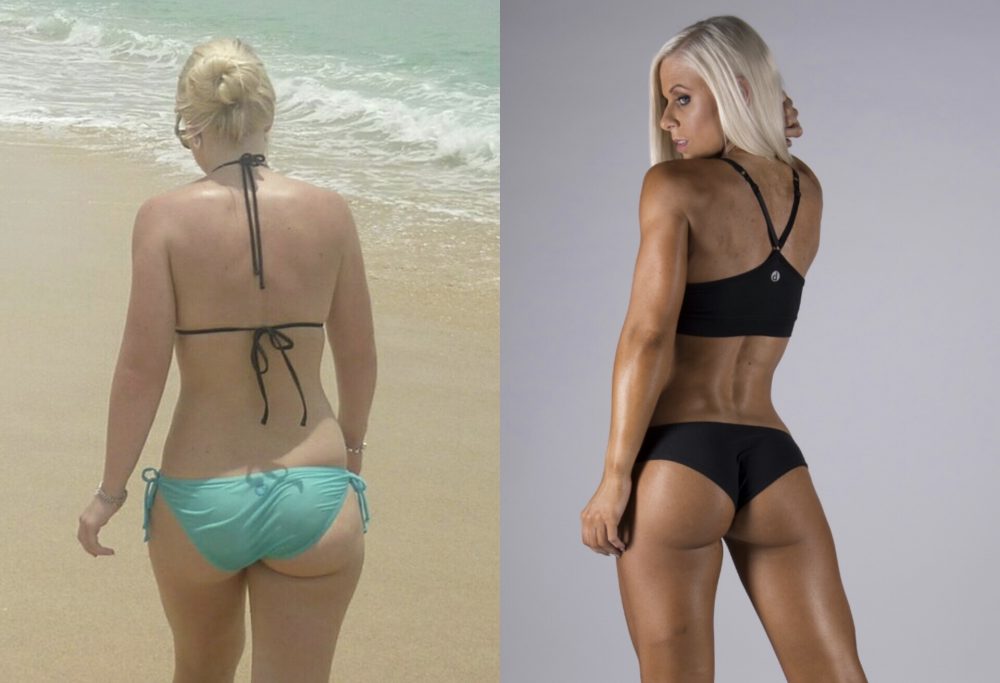
Almost every one is looking for a quick fix and there are hundreds of fad diets, weight loss programs that promise fast and easy weight loss. Many people choose to starve themselves and do hours of cardio. Yes, you will lose weight quickly, but you will also lose muscle, feel low in energy, and probably be miserable!
WEIGHT LOSS VS FAT LOSS
Is there a difference? Yes! A lot of programs and fad diets are intended for weight loss, which means lowering your body weight through the loss of fat and also muscle mass. Your weight is dependent on your energy balance (calories in vs calories out):
- To lose weight you must consume less calories than you burn (calorie deficit)
- To remain the same weight your calories in and calories out should remain the same
- To gain weight you must consume more calories than you burn (calorie surplus)
Therefore, to lose weight you must burn more calories than you consume to ensure that you are in a calorie deficit. But this isn’t great for improving our overall body composition. Retaining as much muscle as you can (or increasing it) will increase your metabolism and actually make you burn fat more effectively. Not to mention, help you achieve that “toned” look that we all want! If you want to focus on improving your body composition, then counting macronutrients is superior to counting just calories because it allows you to target these actions, not just simply dropping or gaining weight. In order to do this, you need to:
- Ensure you get enough protein every day to retain/build muscle.
- Ensure you eat enough carbohydrates, which provide you with energy and the ability to maintain training intensity.
- Ensure you eat enough healthy fats, which are vital for hormone synthesis.
There is no quick fix if you desire long term results. All it requires is consistency and small changes when plateaus occur to ensure you are progressing at your desired rate. The foundation of successful fat loss remains a healthy, calorie controlled diet combined with increased physical activity. For successful, long-term fat loss, you must make permanent changes to your lifestyle and create healthy habits that become your routine.
SETTING A TARGET
From my experience as a personal trainer and online coach I have realised that people are not aware of the effort it takes to change their body composition. In addition to this, they are often unrealistic about the goals they want to achieve and the time frame it takes to achieve these goals. Setting realistic weight loss goals and losing weight in a safe and effective manner will help you maintain your weight loss in the long term. Below are some guidelines to help you determine if your weight loss goal is realistic and achievable:
WOMEN
| BODY FAT LEVEL | RATE OF FAT LOSS |
| Less than 24% | <0.2-0.7kg per week OR 0.25-0.75% of bodyweight per week. |
| 25-34% | 0.45-0.9kg per week OR 0.75-1.5% of bodyweight per week. |
| Greater than 35% | 0.7-1.5kg per week OR 1.0-1.5% of bodyweight per week. |
MEN
| BODY FAT LEVEL | RATE OF FAT LOSS |
| Less than 15% | <0.2-0.7kg per week OR 0.25-0.75% of bodyweight per week. |
| 16-25% | 0.45-0.9kg per week OR 0.75-1.5% of bodyweight per week. |
| Greater than 26% | 0.7-1.5kg per week OR 1.0-1.5% of bodyweight per week. |
People who have a high amount of body fat can often lose larger amounts of weight and body fat. When someone is already lean and wants to get even leaner, the process is more difficult as there is less fat to lose. The goal is to eat as much as possible while still losing fat. By opting for the lower end of the weight loss range you might take slightly longer to reach your goal weight, but you also will probably lose less muscle, feel better, and be able to enjoy the process more!
So, in order to set yourself up for success – create a safe and realistic goal for yourself! So, in order to set yourself up for success – create a safe and realistic goal for yourself! By targeting fat loss over weight loss you will achieve better results in the end, even if though your progress seems a bit slower.
